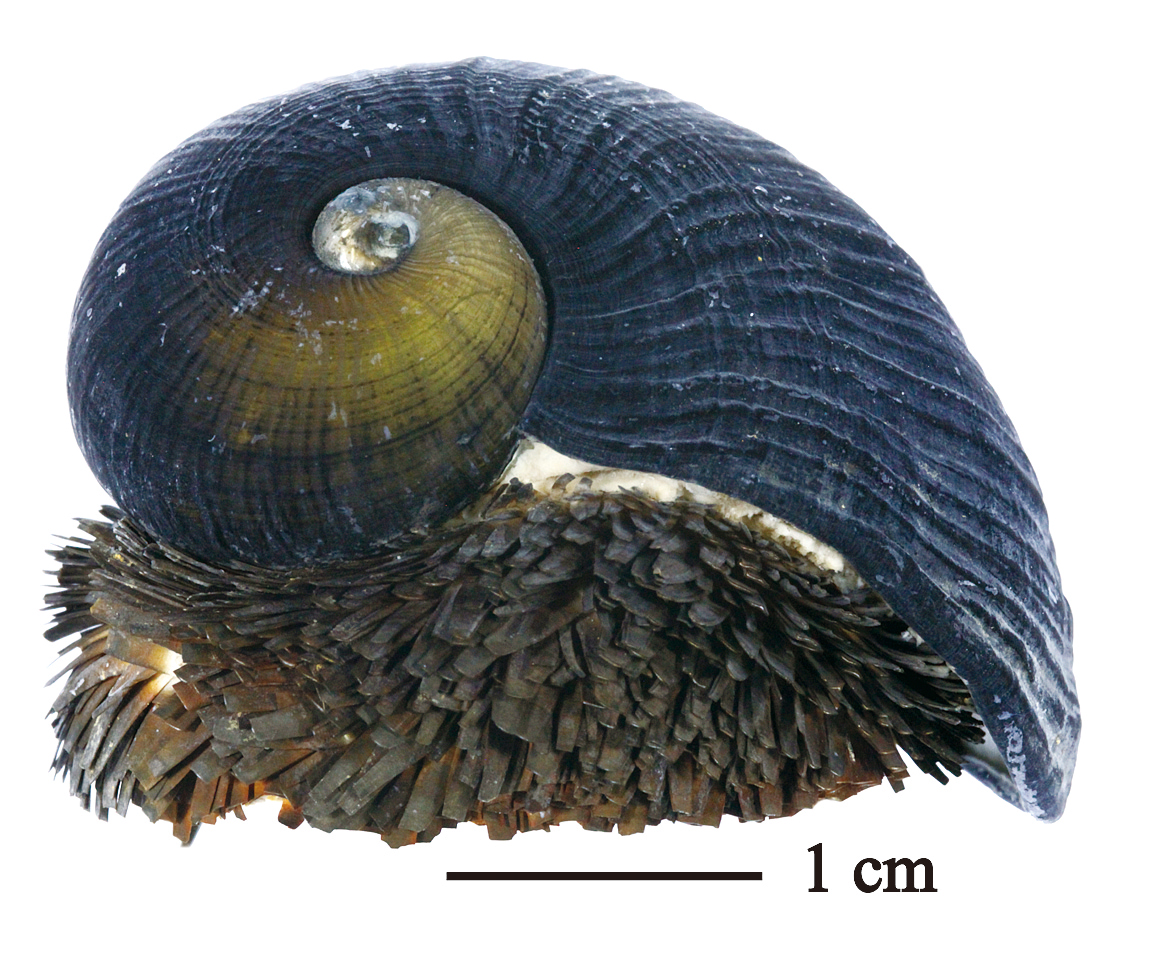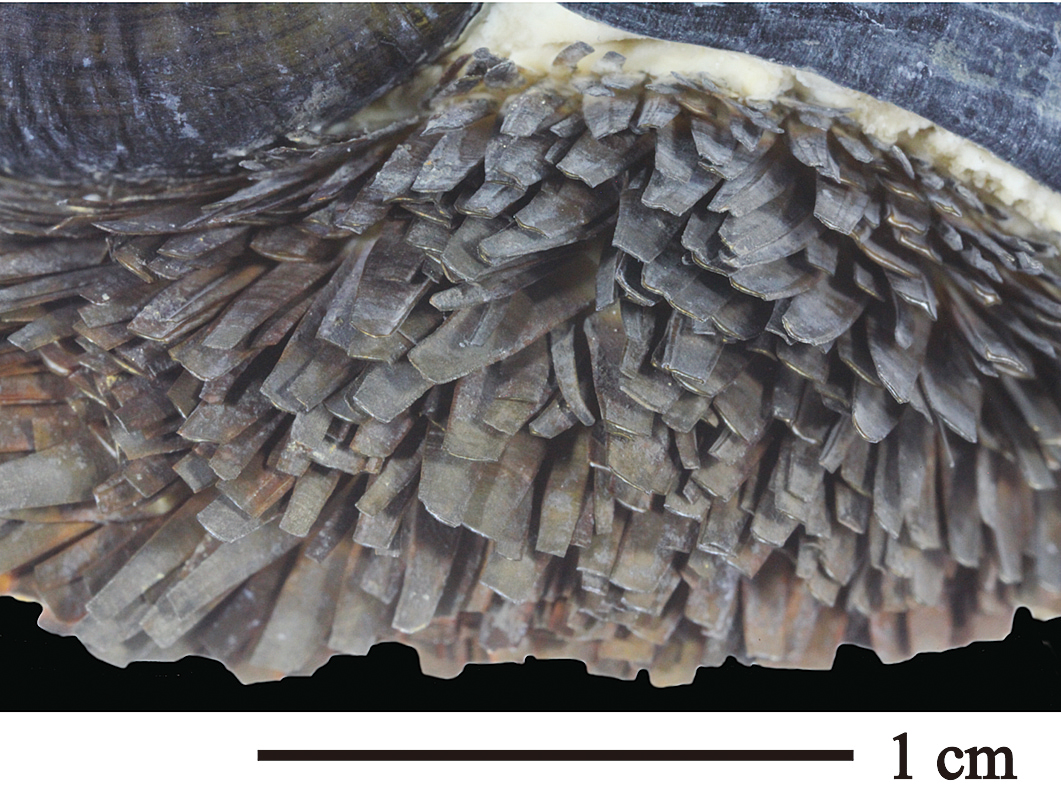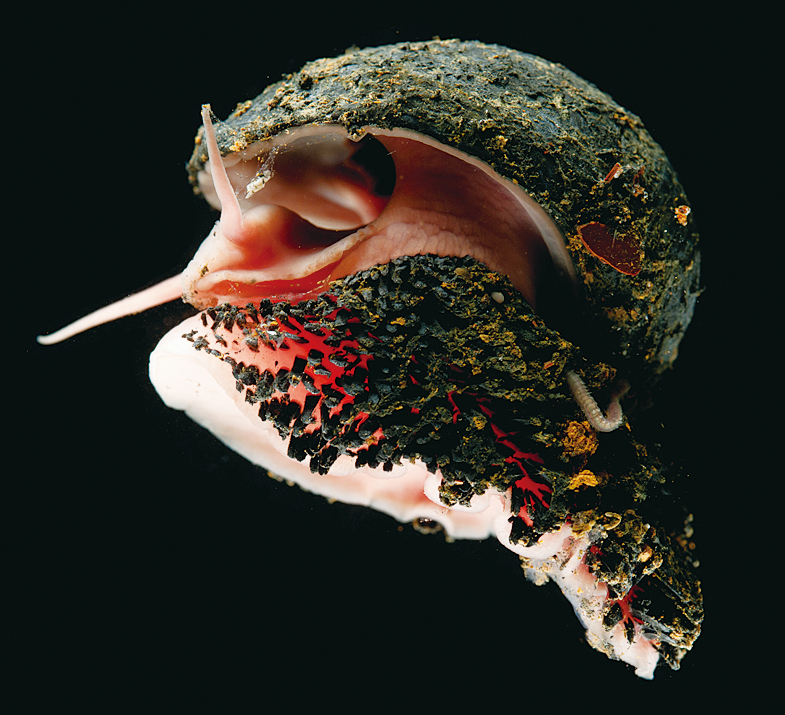B14
Chrysomallon squamiferum
deep-sea snails with scale-bearing foot
A new gastropod species was found from a deep-sea hydrothermal vent in the middle of the Indian Ocean in 2001 and reported in the journal Science in 2003. It has remained undescribed and called “scaly-foot gastropod”. Fourteen years after its discovery, the species was formally described as Chrysomallon squamiferum by Chen et al. (2015). The specimen on exhibit is one of two paratype specimens donated to this museum. The new species is notable for iron sulfide-based scales coving an entire area of the foot. Normally gastropods protect themselves by sealing an aperture with an operculum, when attached by predators. In C. squamiferum, the operculum exsits in juveniles but reduced with growth. Instead, a scale-bearing foot can completely plug an aperture, after the foot is folded and retracted. Therefore, the characteristic scales are considered to function as a protective device analogous to an operculum in other gastropods. (Takenori Sasaki)
References
Chen, C. et al. (2015) The ‘scaly-foot gastropod’: a new genus and species of hydrothermal vent-endemic gastropod (Neomphalina: Peltospiridae) from the Indian Ocean. Journal of Molluscan Studies 81: 322–334.
Chen, C. et al. (2015) How the mollusc got its scales: convergent evolution of the molluscan scleritome. Biological Journal of the Linnean Society 114(4): 949–954. doi:10.1111/bij.12462.
Nakamura, K. et al. (2012) Discovery of new hydrothermal activity and chemosynthetic fauna on the Central Indian Ridge at 186–206S. PlosOne 7(3) e32965.
Warén, A. et al. (2003) A hot-vent gastropod with iron sulfide dermal sclerites. Science 302(5647): 1007.



